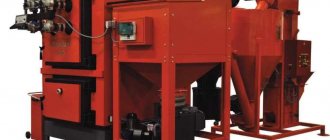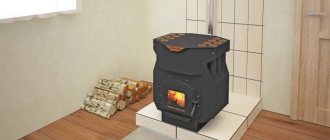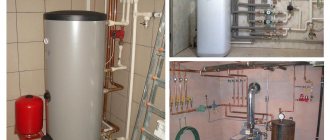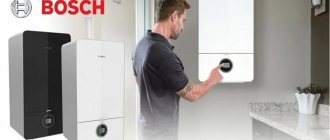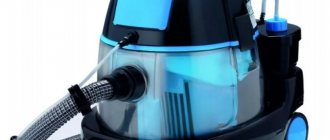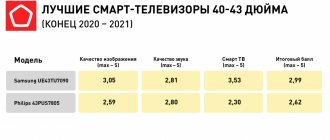The long-burning industrial solid fuel boiler came to our homes not so long ago, although humanity has known about the principle of this kind, slow burning, since medieval times. And the technology of a “smoldering fire” enclosed in a stone vice will be demonstrated in practice by any professional forester or hunter. There are a great many modifications, and almost every seller offers a long-burning solid fuel boiler.
Choosing the optimal and reliable long-burning boiler for a private home can only be done after a thorough assessment of the characteristics of the presented devices. In addition, it will be necessary to coordinate them with the characteristics of the heated room.
A solid knowledge of the range and classification of devices will help you choose a long-burning solid fuel boiler. Let's take a look at their varieties together and see what makes up the price of such an interesting and attractive product.
The demand among the population to buy long-burning solid fuel boilers is based on the constant need to save money, as well as the time spent on adding fuel and regularly cleaning equipment.
Long-burning solid fuel boiler - varieties.
The honorary title of a long-burning solid fuel boiler is given to any device that maintains combustion throughout the day. If a boiler burns out for a day, it gets the long-burning status, if two boilers burn out, the status doesn’t change, if it burns out for a week, they all get the same name.
Thus, we can find a device with a different period of fuel smoldering support, while the very phrase “long-burning solid fuel boiler” is unlikely to reveal to us all the technical characteristics of the device.
Only two main types of equipment are distinguished in this segment - a long-burning wood boiler and a long-burning coal boiler. Both devices are capable of servicing both a water circuit system and a glycol-based coolant system. In addition, a long-burning solid fuel boiler has a number of distinctive features, which we will focus on.
Principle of operation
Long-burning solid fuel devices burn wood from top to bottom. The reservoir is filled completely. For ignition, small wood chips are used, for which a small space is left at the door. At this stage, air enters the chamber.
Construction of a solid fuel boiler.
When fuel is occupied, oxygen access is minimized. The firewood begins to smolder. The top layer burns first, and then the bottom. During thermal decomposition, the fuel releases large amounts of gases. They have a high energy potential and go into an afterburning chamber, where they burn out completely.
As a result, heat is released. The fuel itself is processed into fine ash.
Long-burning solid fuel boiler - methods of fuel combustion
Traditional energy-dependent boilers.
In traditional models, the simplest scheme for burning fuel reserves is usually implemented. In design, they resemble an ordinary stove, with an uncharacteristic special window located in the upper part of the boiler and used to load firewood or coal.
The principle of its operation is based on the smoldering process, which does not involve the burning of a bright flame. During smoldering, a special ventilation pump helps to release a sufficient amount of heat for heating, which turns on automatically and removes excess oxygen from the firebox.
Manufacturers have taught devices to monitor the percentage of oxygen in the combustion chamber, allowing the required amount only to maintain smoldering, preventing an open flame from flaring up. The smoldering state that a long-burning solid fuel boiler maintains provides obvious savings on expensive fuel, and also frees the owner from the routine, hourly addition of firewood or coal.
Engineers made sure that a traditional long-burning solid fuel boiler included a special afterburning section for residual fuel. The afterburner is a winding labyrinth that promotes maximum heat transfer.
A simple solution made it possible to ensure almost complete combustion and destruction of toxic products arising during operation of the boiler. Thus, the environmental safety and efficiency of the device as a whole increases. At the same time, the generated heat is used to heat the coolant, increasing the boiler efficiency to 85%.
The main element in heat exchange in a traditional boiler is the heat exchanger. The coolant flowing through it ensures further transfer of thermal energy directly to the heating radiators.
The traditional long-burning solid fuel boiler is famous for its ease of operation, high reliability and long service life. The disadvantage is the mediocre efficiency, which leaves much to be desired. A more significant problem may be energy dependence.
Electronic regulation of oxygen supply and fan operation are not possible without power supply. Thus, the operation of the heating system becomes vulnerable during emergency power failures. Of course, a pre-installed uninterruptible power supply device will come to the rescue. But, firstly, you need to buy it, and secondly, its operation does not imply a long service life.
non-volatile long-burning boilers
The second combustion method is represented by numerous gas generators. This design is often called a pyrolysis boiler. It is characterized by an increased efficiency value reaching 90%. High intensity of thermal energy generation is achieved by a special method of fuel combustion.
First, the fuel material is dried. The further process is accompanied by degassing, as a result of which about 85% of the substances during combustion are converted into flammable pyrolysis gas. Video review describes in detail how a long-burning pyrolysis solid fuel boiler is operated.
The advantage of pyrrole boilers is their complete energy independence; the device is ideal for installation in problem regions with difficulties in supplying electricity. The second plus is autonomy. No constant adjustment is required, and the temperature is maintained in the specified mode with an error of no more than ± 3°C.
The efficiency is five times better than a direct flame boiler. It will take 10 kg of fuel per day to heat an area of 100 m2. Almost complete combustion frees you from frequent work of cleaning the boiler from ash. The burning time is about 12 -16 hours.
Long-burning solid fuel boiler - pros and cons
In the absence of a gas main, there are not many alternatives to build a heating system. You can install a gas tank, provided that gas supplies are established in the region. You can use environmentally friendly, but expensive electricity by connecting an electric boiler. But what to do if such options are not affordable? Or are gas and electricity resources limited or non-existent?
A long-burning solid fuel boiler will not require significant installation costs from the owner and will provide a reasonable replacement for the listed heating methods.
Advantages:
- Easy to use. Traditional work with wood, pellets or coal does not require special skills. Cleaning up ash takes no more than an hour a week.
- Durability. Service life exceeds 10 years. A long-burning boiler is an unpretentious technique. A simple design, with careful operation, can serve for several decades.
- Ecologically pure . The afterburner ensures almost complete combustion of the fuel. Emissions of harmful substances are a natural product of combustion - processed as a result of photosynthesis.
- High efficiency . There are models on the market with a value of up to 90 – 95%. Minimum heat losses are ensured. Engineering solutions optimize the process of afterburning pyrolysis gases. The heat exchanger design is designed with maximum heat transfer to the coolant.
- Efficiency and economy . Modern equipment is not much inferior to gas analogues. The effectiveness of long-term burning reaches seven or more days.
- Reasonable fuel cost. Sometimes it’s the only possible one. Frees you from dependence on expensive gas equipment.
- There is no permitting documentation for installing the boiler. There is no requirement to conclude service agreements with gas services.
- A long-burning solid fuel boiler allows you to provide home ownership with hot water, if there is a second circuit. In addition, an indirect heating boiler will help expand functionality.
Flaws:
- Constant involvement of the owner . Despite the long combustion process from one load, sooner or later you have to return to replenishing the loading compartment with fuel.
- Regular cleaning . Probably the least popular maintenance process, it requires constant cleaning of ash. All that remains is to envy the clean gas equipment or electrical appliances.
- Separate room . You will have to allocate a separate room with good ventilation and a chimney. A long-burning solid fuel boiler for a private home usually has significant dimensions; it may be necessary to prepare a special installation site with a reinforced foundation.
- Maintenance of fuel stocks . Replenishment and preservation of fuel residues will require additional financial investments. Compliance with safety measures and maintaining a certain moisture content of the product also adds problems in resolving storage issues.
Recommendations for use
When installing a boiler, attention should first of all be paid to the quality of the chimney. Stainless steel pipes with a diameter of 120 to 200 mm (depending on the model) are best suited for it. The ideal option would be a finished pipe with thermal insulation - a sandwich. Pipes with thick walls are not recommended. They take longer to warm up, and soot remains on the walls. It is necessary to clean the chimney once every 2 months.
When the boiler is turned on for the first time, an unpleasant odor may appear. Don't worry - this is normal, as special oil is applied to the metal during production. The first combustion should begin in a ventilated room, and the boiler should be turned on at maximum power. The duration of its operation in this mode is 1 hour.
The fuel is placed in the chamber in a loose layer so that there is an air gap between the firewood. This will allow them to ignite better. To control the combustion process in the ash chamber, the damper opens and closes.
Cleaning the boiler is allowed only after it has completely cooled down. During cleaning, it is recommended to leave some of the ash on the grate, which will serve as natural thermal insulation. This will extend the life of the element. To clean the boiler itself, use a wire brush or scraper. The smoke damper must be open at this time.
Depending on what fuel is used, a certain amount of soot is formed during boiler operation. Coniferous wood produces more waste. Sometimes condensation may form in the chimney: this depends on the level of thermal insulation and the moisture content of the fuel. To reduce the soot layer, it is recommended to use aspen firewood.
How to choose a long-burning solid fuel boiler
We suggest you determine the evaluation criteria that will make it easier to choose a long-burning boiler for a private home. Let's look at the main sections that you should pay attention to and get acquainted with the optimal parameters of suitable devices.
We hope our advice will help you choose the right long-burning solid fuel boiler to ensure comfortable living in the absence of gas.
Solid fuel.
From the very beginning, you need to decide on the type of fuel that is most accessible in your region. Take into account that it will be cheaper and more accessible to transport and store. Is there active logging going on in the nearby area?
Most likely, you should give preference to wood-burning equipment. Homeowners where wood raw materials are in short supply should be advised to take a closer look at heating with pellets.
A coal or anthracite boiler is recommended for those properties where mining is underway or coal transportation is properly organized. It is advantageous to organize heating systems using sawdust combustion at a wood processing facility.
Device power characteristics
A heating system installation contractor will help you choose the required power of a long-burning boiler. If you are creating comfort with your own hands, calculate the area of the heated room.
Traditionally, 10 kW of boiler power is assigned per 100 meters of area. Using simple mathematical calculations, determine the required value. The data obtained will help you find the optimal long-burning solid fuel boiler in the numerous assortment on the heating equipment market. As a rule, it is recommended to add 10% to the obtained value in order to provide a power reserve in case of severe frost.
Loading chamber
There is an indicator that depends on the ratio of the volume of the loading chamber and the power characteristics of the boiler. The value is considered sufficient if it falls within the coefficient range from 3.3 to 5 liters/kilowatt. The coefficient is an important criterion that helps you choose a long-burning boiler for your home.
If the final figure is closer to the maximum index threshold, the more joy for the homeowner - he will not need to boot the device as often.
For example, consider the Viessmann Vitoligno 100-S 25 pyrolysis boiler. According to the technical data, the size of the loading chamber of the device has a volume of 110 liters. Power is 25 kW. We calculate the index: 110/25 = 4.4 l/kW. As you can see, the coefficient falls within acceptable limits and is considered very good.
Long-burning solid fuel boiler Stropuva
Since we are talking about companies that produce long-burning solid fuel boilers on the market, we cannot ignore the well-deserved leader - the Stropuva company. A Lithuanian boiler is capable of operating on one filling of coal for up to 120 hours, on pellets 72 hours, on wood 30 hours respectively.
Very good parameters for this type of long-burning boilers. Let’s also look at why Stropuva boilers have gained such great popularity:
- Long burning. Reaches 5 days.
- Multi-level security. The company claims that during overheating and overload, the boiler device contracts like a tin can under foot load and under no circumstances does it explode, but only shrinks inward.
- Economical. Optimal characteristics of resource use. Wood waste can be used as fuel.
- Energy independence. The Stropuva boiler does not require electricity.
- Ecology comes first and meets high European standards.
- Attractive appearance.
- 5 year warranty.
It was not for nothing that Lithuanian engineers designed a long-burning boiler in the shape of a cylinder. Now, thanks to its compact size, installation of the Stropuva boiler does not require a large area and can fit in the limited space of a city apartment.
Pricing policy for long-burning boilers
The price is determined based on many indicators and values, the main ones fit into three fundamental factors:
- Brand, country of origin;
- Characteristics of thermal power;
- Multifunctional design and ability to process various types of fuel.
By the way, long-burning wood-burning boilers from Stropuva with a power of 20 kW are in the price range of 1400-1900 euros. At the same time, similar power, but on a universal model, will cost 2000-2400 euros.
The classic is represented on the market by the Buderus long-burning boiler from a German concern. Operation is allowed on wood, coal, anthracite and pellets. The cost of the Buderus boiler is determined by the thermal output and ranges from 1400-1900 euros.
Let's add another EU manufacturer from Germany - the company's long-burning solid fuel boiler (Junkers) shows excellent performance. The Junkers boiler with a power of 32 kW with a price per unit of 1600 euros stands out from the range for the better.
The Viessmann company asks for the highest price for its long-burning pyrolysis boiler; for the Vitoligno model, the concern wants to receive from 2300 to 5900 euros for a boiler with a maximum industrial power of 80 kW.
It's time to turn to a domestic manufacturer. Available options start from 35 thousand rubles, so a Russian-made Cooper solid fuel boiler can be purchased for 40 thousand rubles.
Also on the Internet there is a huge amount of advice on how to make a long-burning solid fuel boiler with your own hands. If you have the material and skillful hands, you can create your own cauldron!
conclusions
In conclusion, we would like to say that you should not give in to the impulse to buy a long-burning solid fuel boiler, calculate all the options, and once again compare the calculations of the operating savings of an electric boiler. Try to clarify the necessary and sufficient power of the heat-generating equipment. Most likely, the issue price will be in the same range.
It is possible that an electric boiler, in combination with, say, a heated floor of a film type of infrared radiation, will be equally costly from a financial point of view in comparison with a long-burning boiler, but less troublesome to use. Well, if you decide that you can’t do without a long-burning boiler, don’t skimp and buy a device with automatic coal supply, it will greatly improve your life.
The best manufacturers
It is recommended to choose TKDG only from proven, reliable manufacturers. These include:
- : boilers of the Ochag series with power from 5 to 35 kW.
- Krasnoyarsk Heating Equipment Plant : Zota, Dymok and Topol series.
- SibEnergoTerm : boilers of the Prometheus brand with a power of up to 46 kW.
- TeploDar : Cooper series.
- Bosch (Germany). Supplies boilers for heating houses with an area of more than 500 m.
- Buderus (Germany). The boilers operate on coal and pellets. Power – up to 30 kW.
- Junkers (Germany). The most popular are TKDGs with a power of 25-35 kW.
- Stropuva (Lithuania-Ukraine). TKGD series Buran with power up to 42 kW stand out.
- "Logika" (Poland): boilers with a power of up to 220 kW.
Leading manufacturers are widely represented on the Russian market, which makes it possible to choose the optimal model for specific conditions.
